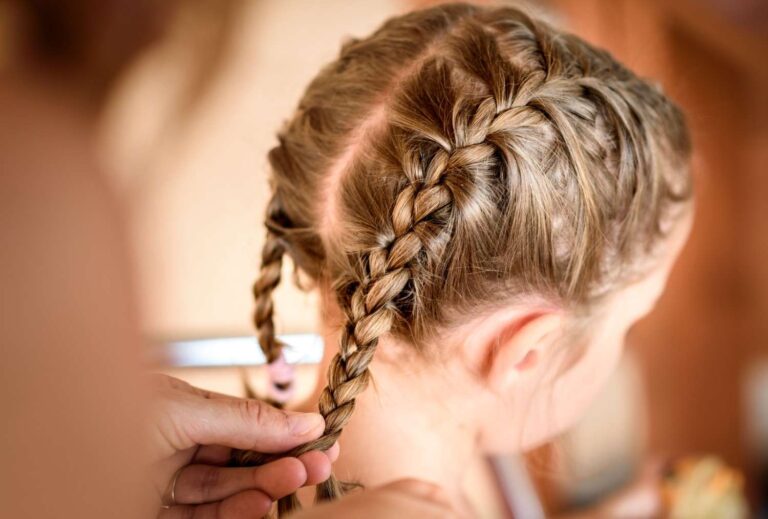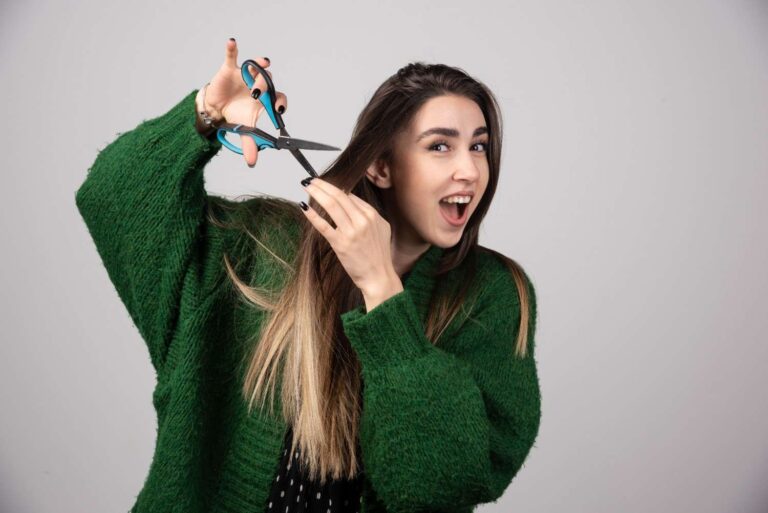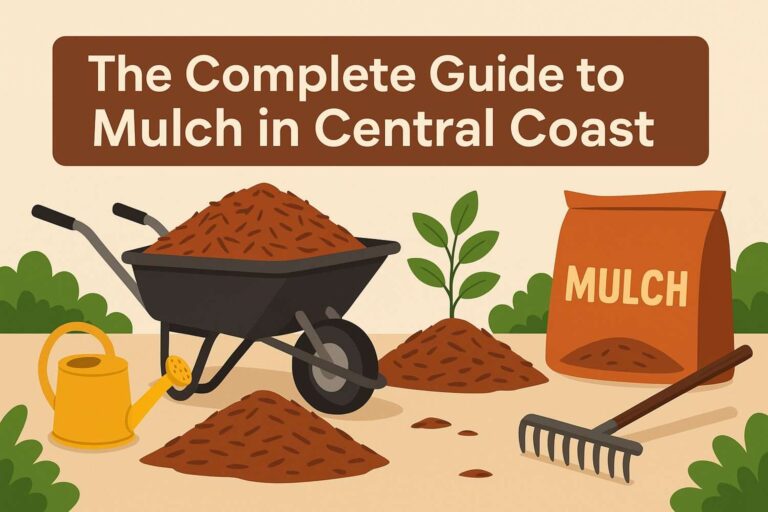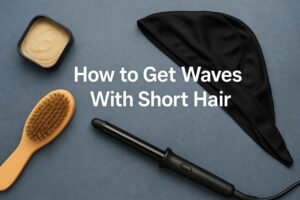Cutting your own hair short can feel intimidating — but with the right tools, preparation, and confidence, it’s completely doable. I remember the first time I tried trimming my own hair with a pair of salon shears; my hands were trembling, but the satisfaction afterward was unmatched. Whether you’re going for a clean buzz, a soft bob, or a chic pixie trim, this guide will walk you through how to cut your own hair short safely and beautifully.
Why Consider Cutting Your Own Hair Short?
Let’s be real — salon visits add up. Doing it yourself saves money and time, and once you get the hang of it, you’ll actually enjoy the process. Cutting your hair short also helps you start fresh, removing split ends and giving your style a boost of volume and shape. Plus, it’s empowering to take charge of your own look.
If you’re nervous, remember: always start longer than you think you want. You can always snip off more — but you can’t add it back.
What You’ll Need Before You Start

Before grabbing the scissors, preparation is everything. Here’s your mini checklist:
- Sharp hair-cutting shears or quality clippers — dull blades will fray your hair.
- Comb and sectioning clips — essential for precision.
- Mirror setup — a wall mirror plus a handheld one helps you see the back.
- Clean, dry or slightly damp hair — dry for clipper cuts, damp for shear cuts.
- A clean workspace — stand over a tiled floor or spread newspaper for easy cleanup.
Having everything ready keeps you focused on the technique rather than scrambling for tools mid-cut.
Table: Clippers vs. Shears – Which Is Right for You?

| Tool | Best For | Hair Length & Texture | Technique | Key Tips |
| Clippers | Buzz cuts, crew cuts, tapered fades | Short, straight, or fine hair | Move against hair growth for an even finish | Start with longest guard first |
| Shears | Bobs, layered short styles, textured pixies | Medium to thick hair | Cut in small, horizontal sections | Keep ends slightly damp |
| Both (Combo) | Pixie trims or maintenance cuts | Mixed lengths | Clippers for nape, shears for shaping | Blend for natural transitions |
How to Cut Your Own Hair Short with Clippers
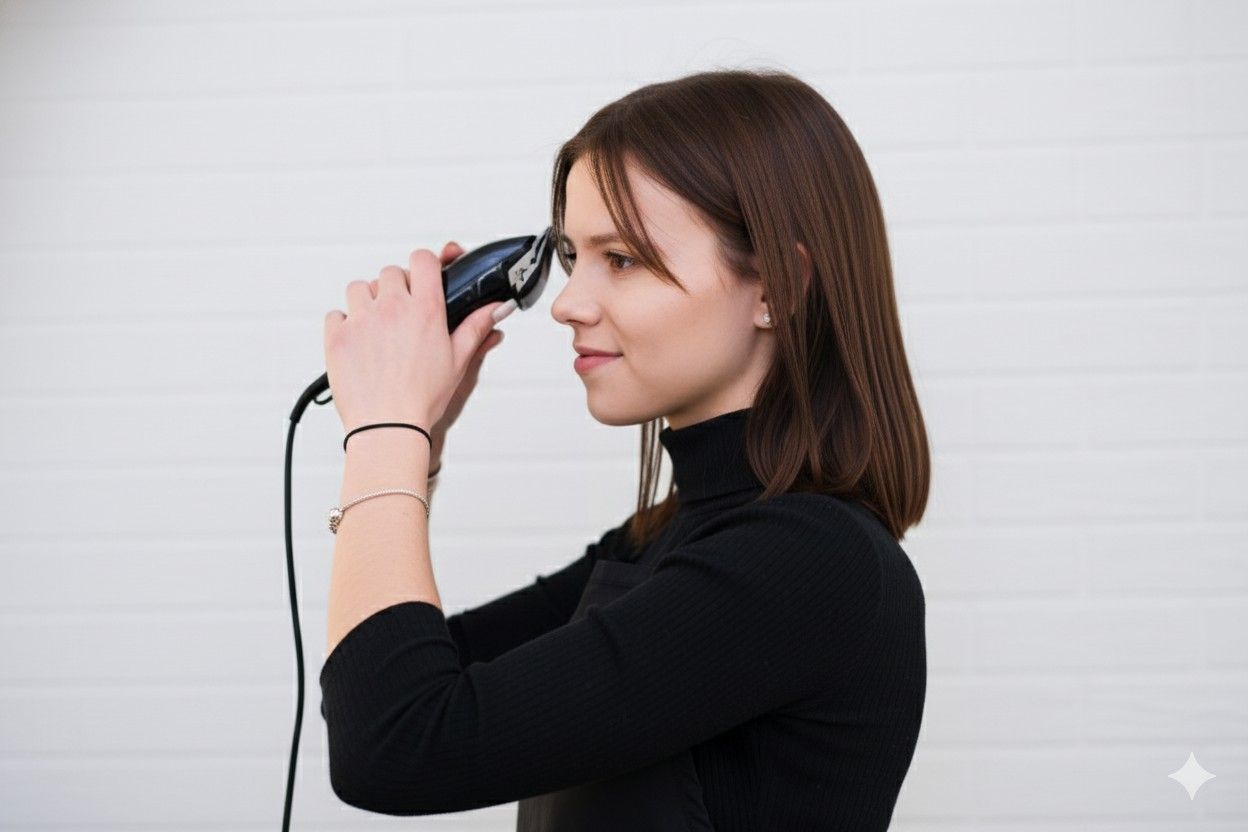
If you’re after a low-maintenance, even short cut, clippers are your best friend.
1. Attach the Right Guard
Start with the longest guard (like a #4 or #5). You can always go shorter later. Shorter guards (#1–#2) create a close buzz, while mid-range guards (#3–#4) give a soft crew cut.
2. Work Against the Grain
Move the clippers against the direction of hair growth — upward from the neck or sides. Maintain steady pressure and let the flat base glide against your scalp for a uniform result.
3. Use a Scooping Motion
As you reach the top of your head, gently scoop the clippers away from your scalp. This avoids creating a harsh line between lengths and helps your haircut look smoother.
4. Blend and Define
Switch to shorter guards as you move up for a tapered fade. To blend transition lines, use an in-between guard length. Finally, remove the guard to clean up edges around your neck and ears at a 90-degree angle.
How to Cut a Short Bob with Shears

If you prefer a classic bob, patience and symmetry are key.
1. Section Your Hair
Divide your hair into three parts — back, left, and right. Clip up the side sections and start with the back. Decide on your target length and cut about half an inch longer than you think you’ll need.
2. Cut Small, Even Sections
Work slowly, keeping the hair taut between your fingers. Make horizontal cuts across the section, then use vertical “point-cutting” snips to soften the edges.
3. Match the Sides
Use the back section as a guide to trim both sides evenly. Bring the hair forward to check for balance. You can always fine-tune once it’s dry.
4. Add Subtle Texture
If your bob looks too blunt, lightly point-cut along the ends to break up the line and add movement. Finish with a smoothing serum for polish.
How to Trim or Refresh a Pixie Cut
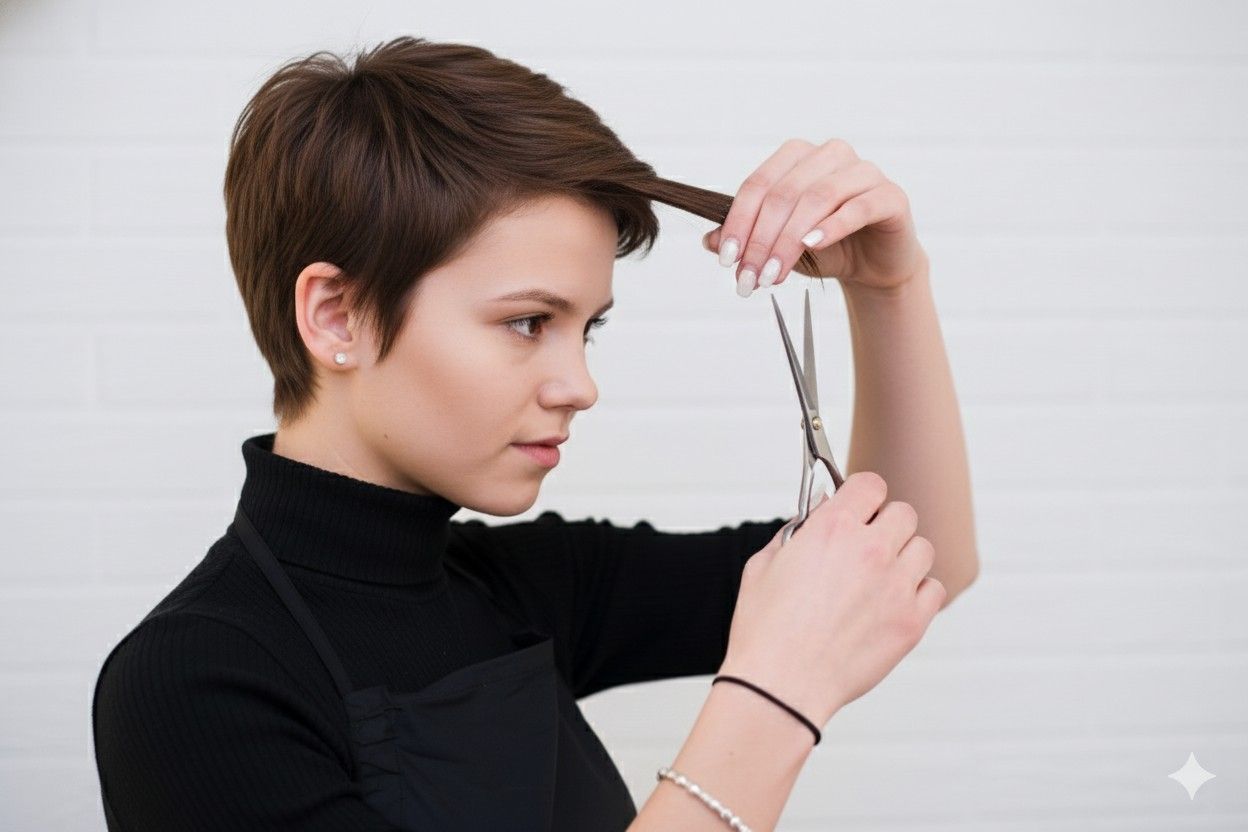
A pixie cut can grow out quickly, especially around the nape and sides. With a few careful steps, you can maintain the shape between salon visits.
1. Section and Secure the Top
Clip the longer top layer up so you can work on the sides and back first.
2. Taper with Clippers
Start at the nape with a longer guard (like #4). Gradually move to shorter guards as you work upward, blending to avoid any harsh step lines.
3. Refine the Top
Unclip the top section and use shears to snip away overgrown strands. Hold small sections vertically and point-cut for texture and volume.
4. Clean Up the Hairline
Use clippers without a guard or a small razor to clean the neckline and sideburns. This instantly makes your cut look professional.
Expert Tips for Success
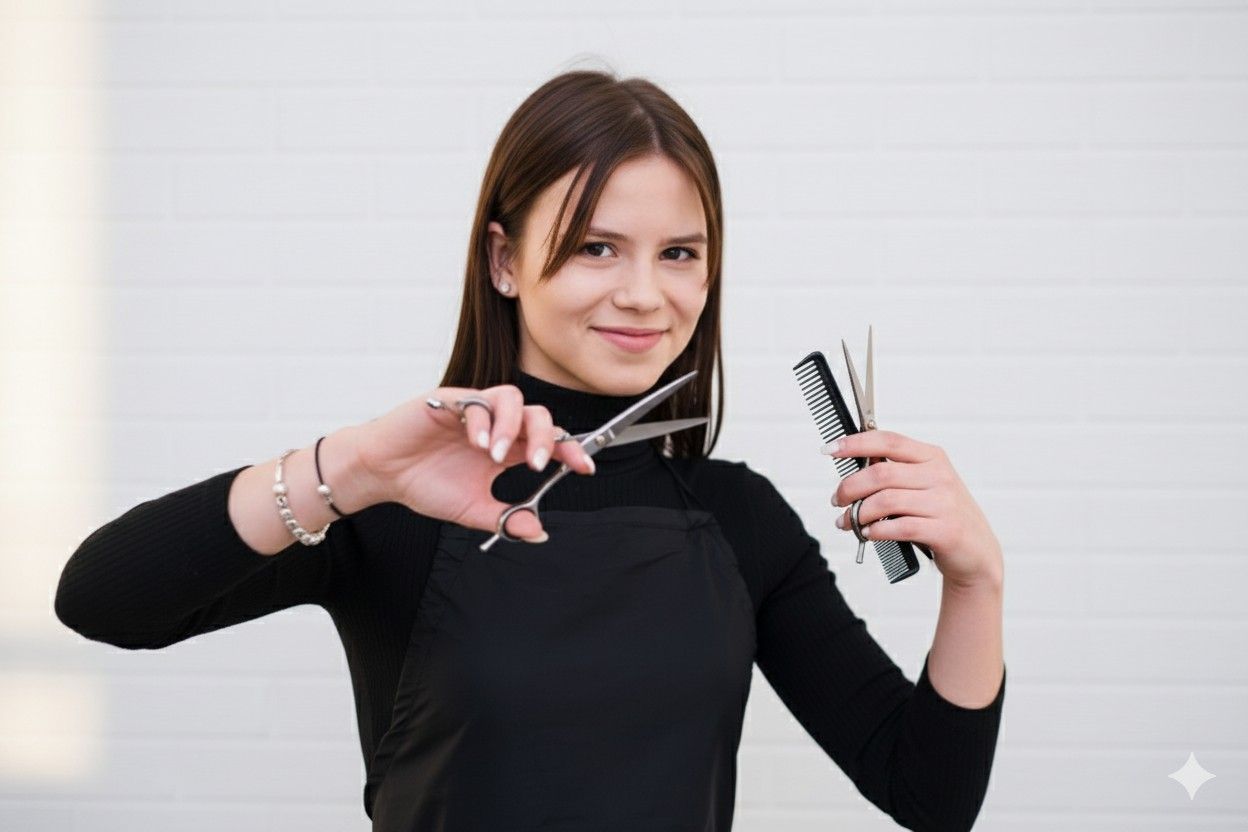
- Start slow: You can’t undo a cut, but you can always go shorter.
- Mirror angles matter: A second mirror helps you see what’s really happening behind you.
- Avoid distractions: Stay focused and keep your workspace calm.
- Don’t cut tired: Good lighting and alertness prevent mistakes.
- Moisturize afterward: Apply a leave-in conditioner or serum to smooth freshly cut ends.
Common Mistakes to Avoid
Even pros have off days — but here’s what you can dodge easily:
- Cutting unevenly because the head wasn’t held straight.
- Using dull scissors that fray ends.
- Skipping sectioning, which leads to random lengths.
- Going too short too fast. Always pause, assess, then trim more.
- Ignoring texture. Curly and thick hair needs slightly longer lengths than fine hair.
How Often Should You Cut Your Hair Short?

If you wear a pixie, you’ll likely need to touch it up every 4–6 weeks. Buzz cuts may need even more frequent trims to maintain sharp lines. Bobs, on the other hand, can go 8–10 weeks before needing a cleanup. Regular maintenance keeps your short cut looking intentional rather than accidental.
Also Read: how to curl short hair
FAQs About How to Cut Your Own Hair Short
Q1: Can I use regular scissors to cut my own hair?
Not recommended. Regular scissors can bend or damage the hair shaft, leading to frayed, uneven ends. Always use sharp hair-cutting shears designed for precision.
Q2: Should I cut my hair wet or dry?
It depends. For shears (like bobs or layered cuts), slightly damp hair gives more control. For clippers, dry hair is better since wet strands can clog the blades.
Q3: How can I avoid cutting too much?
Start longer than your goal length. Trim in small increments, pausing to assess after each section. Once hair is gone, there’s no going back.
Q4: Is cutting short hair harder than long hair?
In some ways, yes. Short cuts show every uneven snip more clearly, so precision is key. However, short hair is faster to manage once you master the basics.
Q5: What’s the best short haircut to start with as a beginner?
A simple buzz cut or one-length bob. Both are forgiving and require fewer layering techniques compared to pixie cuts or fades.
The Power of a Confident DIY Cut
Learning how to cut your own hair short isn’t just about saving money — it’s about taking control of your look. Once you get comfortable with your tools and technique, you’ll find it empowering and even meditative. My best advice? Start slow, respect the process, and trust your mirror (and your gut).
Because at the end of the day, it’s not just a haircut — it’s your personal expression of confidence and creativity.







